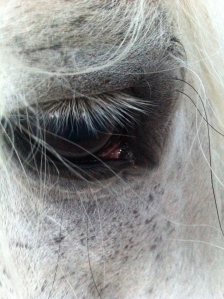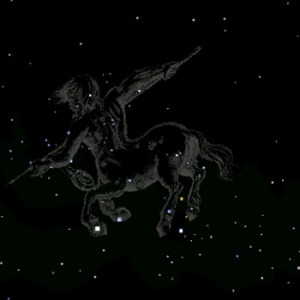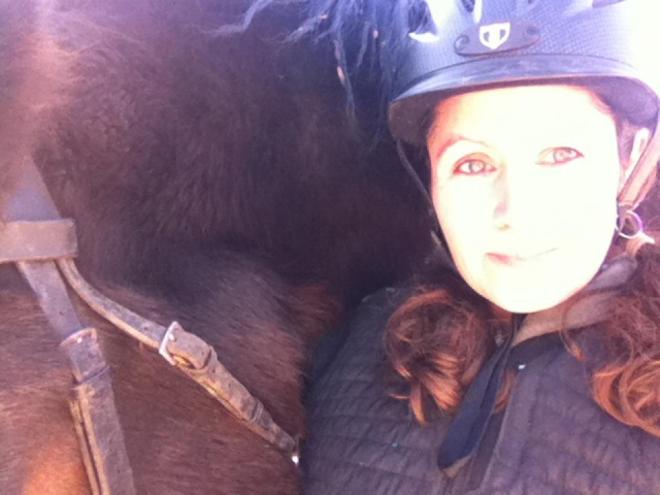Last week I demonstrated how to set up a training session so a horse can learn to stand still around something that scares them even when allowed to spin, trot or canter away as an initial response. I focused on the expression of the flight response not presenting a roadblock to calm, relaxed behavior if it happened in the context of a positive reinforcement paradigm. To be clear, though, the training session I set up for Tarot had many more components than simply allowing a flight response. Just allowing him to run away wouldn’t have helped him access behavior change. The other crucial elements in setting up this session for Tarot were choice, stimulus predictability, reinforcing active coping skills and presenting only one component of the stimulus per training session.
Choice:
The word “choice” is thrown around a lot in training circles these days. As we humans become more sensitive to treating our animal companions more humanely, we are learning to consider what choices we can safely offer our horses and what truly empowering training scenarios might look like. With Tarot, in particular, who has had a life where he started out completely free until adulthood, making choices that felt right according to his instincts and sense of self-preservation, even seemingly benign training set ups can quickly make him claustrophobic. Choice, for him, is monumental
What choices was I able to offer him within the structure of our session? I left him loose so that he didn’t have the halter and lead putting physical or emotional pressure on him to stay, as had been done in his past. He could run as far and as fast as he wanted from the spray and he didn’t have to come back if he didn’t want to. To be fair to him, I wanted him to volunteer to work with the spray. He would vote with his proximity. Just like a human at a therapy session who can say “I don’t want to talk about that right now, I’m not ready,” I wanted him to be able to choose not to “talk” about his fear of fly spray. If he had left and not re-engaged after the initial spray, I would’ve put the fly spray away and worked on familiar exercises he knows and enjoys.
Stimulus Predictability:
If I were able to go back and change one variable in the training session, I would have conditioned the word “Spray!” to the lift of the bottle and then the active spraying three to five times outside his paddock, so he understood the predictive relationship between the two. He understood it within the span of the session but it was a small hole that could have and probably did undermine his relaxation.
Reinforce active coping:
Research from 2001 has shown that when animals utilize active coping strategies in response to previously negative (ie: scary!) conditioned stimulus, their amygdalas actually re-route their wiring from moving to the more primitive and fear-maintaining brain stem to the active, conscious, motor circuits. This re-route doesn’t occur if the animal remains passive or “frozen”. According to the research, “It is ‘learning by doing,’ a process in which the success in terminating the conditioned stimulus reinforces the action taken.”
In Tarot’s case, when he chose to walk toward the fly spray, an active strategy, I clicked the behavior, a yes answer, and stopped spraying and lowered the bottle (terminated the stimulus). For him, the sound, smell and feel of fly spray elicits a deep, conditioned fear response. Just teaching him to stand still or be passive and allow the spray to happen doesn’t give his brain a new response to code and use in the future. He has to be active in the process. He has to do something.
Present only one component of the stimulus per training session:
Fly spray isn’t one dimensional. I can’t ask Tarot if the sound, smell or feel of it is the most alarming to him. So, to avoid making it too difficult for him to change his behavior, I have to make sure to “split” the presentation of it. In our first session, I only present the sound and visual of the spray. I have the bottle filled with water so there’s no unfamiliar scent and I only spray NEAR him to avoid the physical sensation of the fly spray hitting him. Once he is completely relaxed with spray near him, then I will move to actual spray with scent near him, then then spray with water directly sprayed onto his body and finally real fly spray sprayed directly onto his body.
Those are the components that make up Tarot’s session from last week. It all makes lovely sense in print. But, as Alexandra Kurland says, “We don’t know what the horse has learned, we only know what we’ve presented.” In order to find out how Tarot processed his lesson, I went out and repeated the same training session to see where he was emotionally and what behaviors he was able to offer. Here’s what happened:
Not only was Tarot more relaxed this time, he never chose to leave. Because there was no flight response, I couldn’t reinforce walking back toward the spray as his active coping strategy. Instead he offered incremental movements of his head-down behavior as a new strategy. You can see him begin to offer the head lowering almost immediately upon initiation of the spray. This behavior is totally uncued and is completely self-directed by Tarot. He is driving the session. Another horse might choose a totally different behavior and that would be acceptable too.
For Tarot, head-lowering says a lot about his emotional state.
Horse’s heads tend to shoot up when they are nervous, their backs invert and their muscles tense and are ready for action; this makes Tarot’s choice of active coping particularly lovely, as a signal of relaxation. By lowering his head, he is reducing his binocular vision, less ready to flee and adopting the beginning of a “grazing posture” which only happens when there is no threat. He gives several long blinks during the session, very different from the wide unblinking eyes of fear. In addition, on the last repetition with the spray, he even gives a long sigh, indicating a release of tension.
When I assess what Tarot learned in his session, the measurable changes are: he is able to be voluntarily in proximity to fly spray, he is able to stand near fly spray and he is able to offer head-lowering while fly spray is actively spraying. These are huge changes that took place over only two training sessions. Learning to offer our horses scenarios to practice active coping and learning to offer them real choice gives fearful and anxious horses a chance to have a better quality of life. Using these tools can help them access both safer and more functional responses so that living in our human world feels more predictable and easier. We all deserve a chance to re-route our fear rather than be trapped by it.





